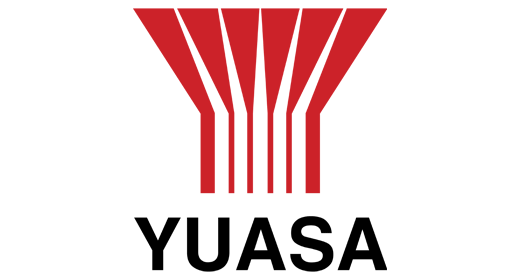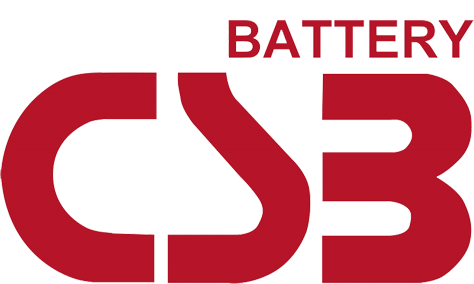Demystifying UPS Technologies for IT Managers in 2025
The transformative power of technology has penetrated every business sector and industry. One area that has witnessed this impact vividly is the world of IT, particularly through Uninterruptable Power Supply (UPS) technologies. These remarkable innovations have come a long way from simply providing backup during power interruptions to shaping IT infrastructure strategies, especially in 2025.
As the world becomes more digital and data-driven, the role of UPS in protecting data integrity, promoting energy efficiency, and enhancing operational processes has become pivotal. But despite these tremendous strides, there is a whole lot more that lies ahead. Improvements in technology, emerging trends, and growth opportunities have redefined the landscape, making it crucial for IT managers to stay ahead of the curve.
In this article, we explore various aspects of UPS technologies, from their evolution, current state, application, and future trajectory to how IT managers can leverage them for robust data protection, operational efficiency, and business continuity. So, whether you're an experienced IT manager or just getting started, this comprehensive guide is designed to help you understand and navigate the complex world of UPS technologies.

A Room to Improve UPS Technologies
Have you ever imagined a world where power supply systems are flawlessly reliable, offering impeccable performance 24/7? While it sounds like a dream, the reality is that Uninterruptable Power Supply (UPS) systems have their own set of challenges, always leaving room for growth and improvement. In this section, we will delve into the intriguing world of UPS systems, examining their technological limitations, the business needs they must meet, and the adaptability hurdles they often come across.
Technological Limitations
Every technology has its boundaries, and UPS systems are no exception. They're great at providing backup power during outages, but there's always a capacity limit to consider. Despite advancements like lithium-ion batteries and modular designs, UPS systems still face three main technological limitations:
- Weight and Size: Higher energy storage often means bigger size and more weight. This element tends to place a limit on UPS capacity.
- Heat Emission: Any device converting and storing power produces heat. Managing heat emission is a persistent challenge for UPS systems.
- Run Time: Batteries can only provide power for a limited duration. How long a UPS can sustain power during an outage is a critical factor for businesses.
Despite these limitations, UPS technologies tirelessly push the boundaries to offer better solutions – indeed, every cloud has a silver lining.
Business Needs
With growing dependence on online platforms and digital services, businesses today require more than just power backups. They require UPS systems that are efficient, reliable, and adaptable to their unique business structure. Modern businesses are looking for:
- Continuity: They want a zero-tolerance system against downtime.
- Cost Efficiency: Businesses require innovative, yet affordable, solutions.
- Eco-Friendly: With a global shift towards sustainability, businesses prefer 'green' UPS technologies.
It's a challenging landscape, but it's these exact requirements that drive innovation and improvements in UPS technologies.
Adaptability Challenges
In a rapidly evolving world, adapting to changes is key. However, this is where UPS systems face their greatest challenge. Factors like:
- Shifting Technologies: Adapting to the introduction of new power sources (like solar) is difficult.
- Varied Power Requirements: Different industries have diverse power needs. Catering to each is a challenging task for UPS systems.
- Regulatory Compliance: Meeting environmental regulations adds an extra layer of complexity to the system design.
The road to improving UPS technologies is by no means straightforward. But every hurdle encountered offers a unique opportunity, setting a platform for growth and innovation. It's through these challenges that we will propel our way towards an era with impeccable and reliable power supply systems.
UPS Technologies: What's New
Welcome to 2025, a year filled with mind-blowing technological developments in the UPS (Uninterruptible Power Supply) industry. We’ve seen an impressive evolution in this field in recent years, touching nearly every corner of our globe. Now, let's step into what's new, what's trending, and what's driving growth in 2025.
Latest Technological Developments
In a world that runs on technology, the importance of constant, reliable power has never been more apparent. UPSs have become the unsung heroes that keep our electronic lives in motion in this tech-dependent era.
Let's explore the top three innovations leading the UPS industry:
- Smart Connectivity: UPS devices now embrace IoT-enabled functions, promising new efficiencies. Through real-time data collection and predictive analytics, failures are prevented before they happen.
- Energy Storage Breakthroughs: Li-ion batteries have revolutionised energy storage in UPS products, offering greater energy density, less weight, and extended battery life.
- Green Impact: The environmentally conscious trend continues with more energy-efficient UPS designs, minimising electricity consumption as well as carbon footprint.
Industry Trends
As the UPS industry evolves, several significant trends take centre stage:
- Technological Convergence: The convergence of power electronics and digital technologies has engendered smart UPS systems that can predict, preempt, and effectively respond to power issues.
- Demand Surge: With more businesses recognising the need for uninterrupted power supply to maintain and protect operations, there's an increased demand for UPS products.
- Innovations in Cooling Technology: Recent innovations in cooling technologies are transforming the UPS sector, leading to more energy-efficient and economical systems.
Growth Opportunities
In this swiftly evolving industry, there are key growth opportunities making waves:
- Emerging Markets: While developed markets remain reliable strongholds, burgeoning economies pose interesting growth prospects for the UPS industry.
- Shift to Renewables: As the world pivots towards green energy, UPS systems aligned with this shift will enjoy significant growth potential.
- Role in Data Centres: With the exponential growth of data, the need for a reliable power supply in data centres presents enormous opportunities.
The UPS technology landscape in 2025 is rich with possibilities, shaped by factors ranging from IoT adoption to renewable energy advancements. The future, charged with opportunity, beckons, and we are here to both witness and participate in this exciting journey.
Making Sense of UPS Technology for IT Managers
Uninterruptible Power Supply (UPS) technology—while not as flashy as the latest software or hardware—is an essential component of any robust IT infrastructure. As IT managers, ensuring that our systems remain up and running smoothly, even in the face of power supply issues, can be our key to success. Investment in high-quality UPS units can save significant time, resources, and headaches down the line.
Understanding the UPS Technology
Granted, UPS technology can seem a bit overwhelming at the outset. How it works, how to choose the right one, and how to maintain them can throw most of us. But don’t worry! We’re here to break it down:
- Function: A UPS offers power protection by providing immediate emergency power to your devices when the main power source fails. It serves as a bridge, covering the few minutes it usually takes to switch over to a backup generator.
- Types: UPS units come in three main types—standby, line-interactive, and double-conversion. Each offers varying levels of protection to meet specific needs. For instance, a double-conversion UPS can protect against nine common power problems, making it suitable for vital server operations.
Now, how does that tie into our roles as IT managers?
How it applies to IT infrastructure
A reliable UPS is not just a necessity—it's an asset to our IT infrastructure. It’s the layer of protection we need from diverse power-related problems—outages, spikes, surges, and the like. How?
- Minimises downtime: UPS units can help prevent data loss and maintain uptime during sudden power outages. They ensure our networks and servers keep buzzing along, allowing us to meet the high-availability demands of today's digital world.
- Safe shutdown: They allow us ample time to safely power down systems when power supply issues persist. A properly sized UPS can prevent abrupt system shutoffs that could result in unsaved work loss or, worse, hardware damage.
Training and Development Needs for IT Managers
To take full advantage of UPS units, it's crucial to know the beast. It’s not enough to install it and forget it; regular maintenance is key. So, what should we know?
- Spec-out the right unit: Assessing power needs beforehand can ensure we choose the right UPS unit. This involves understanding the load, runtime, and the level of power protection required.
- Regular maintenance: UPS units, like all technology, degrade over time, making regular inspection and upkeep vital. This includes ensuring firmware is up-to-date and batteries are in working order.
Understanding UPS technology and its implications for IT infrastructure is vital for all of us in IT management. It’s an investment that, with the right training and development, can significantly improve our overall operations—saving time, preserving data, and ensuring our systems are always ready for business.
Practical Applications of UPS Technologies
In a world where technological advancements are made consistently, it's essential to understand the practical applications of these innovations in our ever-evolving digital landscape. One such development is the Uninterruptible Power Supply (UPS) technology, which, despite not being a household name, plays a pivotal role in almost all sectors. Now, allow us to delve deeper into the real-world applications of UPS technologies and illuminate how they are reshaping our approach to digital solutions.
Data Protection
Data centres are the beating heart of most businesses and modern institutions. However, they are vulnerable to power fluctuations that can lead to equipment failure and data losses. This is where UPS systems come to the rescue. UPS technologies provide a steady and consistent flow of electricity, acting as a protective barrier against power surges and disruptions.
Here are some ways UPS technologies protect your data:
- Backup Power Solution: UPS systems serve as an immediate source of power during outages, keeping your data centres active and preventing any potential data loss.
- Voltage Regulation: UPS technology ensures your data centre receives a continuous stream of electricity at the correct voltage, protecting your equipment from power surges.
- Power Conditioning: UPS systems smooth out power fluctuations, protecting your equipment from any sudden electrical peaks and dips.
These applications make UPS technology an invaluable resource in maintaining the integrity of the operation and advancement of data-heavy sectors like finance, healthcare, and IT.
Energy Efficiency
In an era increasingly concerned with carbon footprints and sustainable actions, it's hard to overlook the role of UPS technologies in fostering energy efficiency. They ensure that electrical devices function at optimal levels and conserve energy in the process.
The newest UPS systems come equipped with Energy Saving Mode (ESM), where the UPS operates at high efficiency even during idle times or periods of low system load.
Improved Operational Processes
Beyond data protection and energy efficiency, UPS technologies have found relevance in everyday operational processes. They ensure seamless work performance, minimise downtime, and increase productivity.
Primarily, UPS technologies deliver uninterruptible power that allows businesses to face unexpected power interruptions without disrupting their critical operations. It plays a vital role in sectors where continuous operations are indispensable, like in hospitals or manufacturing units.
Remember, as the dependence on digital processes continues to grow, the practicality and necessity of UPS technologies become more pronounced. By integrating UPS solutions into your operations, you're not only safeguarding your data and enhancing your energy efficiency but also ultimately fortifying your position in the market.
The Future of UPS Technologies
In the realm of power solutions, Uninterrupted Power Supply (UPS) systems have carved a niche for themselves due to their reliability and efficiency. They're the silent heroes, underpinning many critical infrastructures, from data centres to medical facilities. While the core concept of ensuring continuous power flow remains unchanged, it is exciting to visualise how UPS technologies might evolve with time. Let's navigate through the prospective terrain of future UPS technologies, the challenges they may face and how we can strategise for uncertainty-proofing these indispensable systems.
Predicted Technological Innovations
The future of UPS systems holds promise with several notable technological advancements on the horizon:
- Energy Efficiency: Greater energy efficiency ranks high in the checklist of UPS advancements. Technologies such as silicon carbide and gallium nitride semiconductors may play a dominant role in achieving this.
- Machine Learning: Machine learning algorithms will likely enter the UPS scene, delivering predictive analytics and optimised maintenance schedules.
- Battery Technology: We foresee substantial improvements in UPS battery technology, moving towards sustainable, high-capacity power sources like lithium-ion batteries and even fuel cells.
Potential Challenges
Anticipating future trends is far from a crystal-clear process. There are always uncertainties to tackle and potential roadblocks to overcome:
- Regulatory Constraints: Any advancements must comply with regulatory requirements, which can sometimes hinder rapid progress.
- Technological Limitations: Certain technological leaps might confront inherent limitations or risks, such as safety concerns with high-capacity batteries.
- Economic Feasibility: Investment is a big player in determining the feasibility of any technology. Economic volatility could potentially delay the rollout of new UPS systems.
Strategies for Futureproofing
In the face of these challenges, we advocate for three key strategies to ensure UPS technologies continue to innovate and provide reliable power solutions:
- Research and Development: Continued investment in R&D is crucial to surmount the challenges and capitalise on the potential of upcoming technologies.
- Regulatory Engagement: Proactively engaging with regulatory authorities can help to align technology development with regulatory frameworks.
- Sustainability Focus: By embedding sustainability in our strategy, we can harness eco-friendly technologies and meet global green initiatives.
The future of UPS technologies is undoubtedly thrilling. While challenges exist, our proactive approach and strategic planning can drive UPS systems towards a future marked by increased efficiency, predictive intelligence and sustainability. So, let's continue to light the way, powering the future—one UPS system at a time.
Conclusion
While the world of UPS technologies constantly evolves, it remains integral for IT managers to adapt and grow alongside it. As businesses move deeper into 2025, uninterruptible power supplies will undoubtedly play a pivotal role in sustaining critical power needs and ensuring digital infrastructure resilience.
We've delved into the heart of UPS technologies, from understanding current limitations and advancements to exploring their practical applications and the anticipated future trends. It's clear that as diverse industries strive for efficiency, reliability, and minimal downtime, the worth of a steadfast UPS system, like those provided by Secure Power, cannot be underestimated.
Continuing professional development remains crucial for IT managers who wish to sharpen their understanding of UPS technologies. Doing so not only strengthens their capability to protect digital assets and safeguard operational continuity, but it also sets the groundwork for businesses to embrace novel UPS technologies as they arise.
At Secure Power, we'll continue our commitment to stay at the forefront of power technology and supply robust systems that support UK businesses' evolving needs. Find the perfect UPS solutions with us and join the journey forward into a confidently powered future.
Frequently Asked Questions
- What are the different UPS technologies available in 2025?
The different UPS technologies available include 1. Line-Interactive UPS, 2. Online Double Conversion UPS, 3. Standby UPS, 4. Delta Conversion On-Line UPS, and 5. Ferroresonant UPS.
- What is a Line-Interactive UPS?
A line-interactive UPS is a type of UPS technology that provides battery backup and surge protection. It continuously regulates voltage by using an automatic voltage regulator (AVR) to compensate for voltage fluctuations.
- What is an online double conversion UPS?
An online double conversion UPS is a UPS technology that provides the highest level of protection. It converts incoming AC power to DC power and then back to AC power, isolating connected equipment from power disturbances and delivering consistent output voltage and frequency.
- What is the difference between a standby UPS and an online double conversion UPS?
The main difference between Standby UPS and Online Double Conversion UPS is that Standby UPS switches to battery power only when it detects a power outage or abnormal voltage, while Online Double Conversion UPS continuously provides battery power, isolating the connected equipment from power fluctuations.
- Which UPS technology is most suitable for IT managers?
The most suitable UPS technology for IT managers depends on their specific requirements. For critical applications that require seamless power protection, an online double conversion UPS is recommended. For less critical applications, a line-interactive UPS or standby UPS may suffice.














